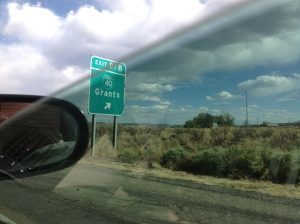by Janine Vanderburg
Last weekend, a local nonprofit executive emailed me. In charge of his organization’s fundraising program and getting to the place where he could no longer write all the grant proposals, he was thinking of hiring an internal grantwriter.
His big question was this: How many grant proposals can one writer be expected to produce in a year?

Is your next grant just around the corner?
My answer: It depends. Here are some of the questions you might ask yourself.
- What aspects of grant seeking will the grantwriter be in charge of? Will he or she do all the research to find the grants? Cultivate relationships with the granting organizations? Gather data and supporting research and evidence? Work with the program staff? Write the proposals? Assemble attachments and secure signatures? Enter and manage grants information in the database? Conduct the grant reporting?
- What are your expectations about the grantwriter’s participation in regular staff meetings and functions, other fundraising events, etc. that take away from grant development time?
- What types of grants are being sought? If you are applying for federal grants and other more complex grants, you’re probably less able to rely on good boilerplate.
- What are the due dates of your largest grants? JVA does a lot of grantwriting for groups that also have internal grantwriters but can’t manage multiple important deadlines that converge. Any organization that relies on a single grantwriter will run into competing deadlines that are difficult to manage.
- How many different programs will they write proposals for? It is much more time-consuming to manage and develop grant proposals for numerous programs than it is for a single organization.
- What is the culture of the organization? Once a good boilerplate is developed, is there a high level of trust in the grantwriter? Or does everyone in the organization need to weigh in with multiple rounds of revisions on every proposal?
My recommendations for moving forward:
- Analyze the time that you’ve spent over the last year in the functions that you’re looking to hand off (and add in the time that you would have spent on various elements if you hadn’t had competing priorities), clump the types of proposals you most frequently do into “categories” of average hours spent, e.g., an eight-hour proposal, a 20-hour proposal, a 100-hour or longer proposal, then do some projections. This is how JVA budgets out our pricing for different grantwriting contracts that we have.
- Consider the cost vs. benefit of in-house vs. outsourced grantwriting. In a perfect world, an internal grantwriter may be the best for you, but what does that perfect world look like? You would have someone who is good at all types of grants—foundation, corporate, state and federal—who works for a reasonable salary and who is completely knowledgeable and enthusiastic about your programs. If you have that person, great. But, what if he or she eventually leaves for some reason, or you find yourself with three major proposals due the same week and with only one grantwriter?
Outsourcing your grantwriting to Joining Vision and Action (JVA) may be a good solution. Our grantwriter (only better!) product is the answer when you want someone who is always available, has experience writing all types of grants successfully and is priced at or below what a good internal grantwriter would cost. In 28 years, JVA has written more than $1 billion in successful grants. If one member of our team is sick, on vacation, on leave—or if multiple deadlines converge—your grants are still being written.
Want more information? Contact Us.







Leave A Comment